Linear equations -> hexagonal prism
Hexagonal Prism
A hexagonal prism is a three-dimensional shape with two hexagonal faces and six rectangular faces. The two hexagonal faces are the bases of the prism, while the six rectangular faces connect the corresponding sides of the two hexagons. The length of all the rectangular faces is the same, as is the length of the sides of the hexagons.
Properties of a Hexagonal Prism:
- It has 8 faces in total: 2 hexagonal faces and 6 rectangular faces.
- It has 12 edges.
- It has 6 vertices.
- The opposite faces are parallel and congruent.
- The lateral faces (the 6 rectangular faces) are all rectangles.
Formulas for a Hexagonal Prism:
Let's denote the side length of the hexagon as s, the apothem (distance from the center of the hexagon to the midpoint of any side) as a, and the height of the prism as h. Then, the following formulas apply:
Surface Area (A) = 2 * (Area of hexagonal base) + (Perimeter of hexagon) * height
Volume (V) = (Area of hexagonal base) * height
Area of hexagonal base = 3/2 * s * a
Example Problem:
Find the surface area and volume of a hexagonal prism with side length s = 6 units, apothem a = 5 units, and height h = 10 units.
First, calculate the area of the hexagonal base using the formula: Area of hexagonal base = 3/2 * s * a = 3/2 * 6 * 5 = 45 square units.
Next, calculate the surface area: A = 2 * 45 + 6 * 6 * 10 = 90 + 360 = 450 square units.
Then, calculate the volume: V = 45 * 10 = 450 cubic units.
Now, you should have a good understanding of the properties, formulas, and calculations related to a hexagonal prism. Remember to practice solving problems to reinforce your understanding!
.◂Math Worksheets and Study Guides Eighth Grade. Linear equations
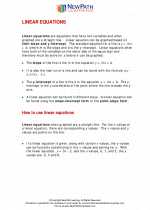
 Worksheet/Answer key
Worksheet/Answer key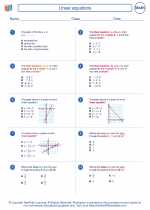
 Worksheet/Answer key
Worksheet/Answer key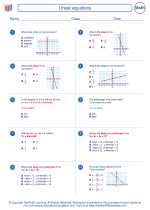
 Worksheet/Answer key
Worksheet/Answer key
 Worksheet/Answer key
Worksheet/Answer key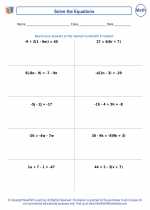
 Worksheet/Answer key
Worksheet/Answer key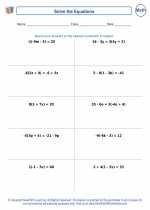
 Worksheet/Answer key
Worksheet/Answer key
